We arrived at Bowness House Farm B&B in Bowness on Solway by taxi from Carlisle Sunday afternoon; walked a half block to the King’s Arms, the local pub; bought a Hadrian’s Wall passport book, and walked down to the Solway. It is a wide, shallow estuary, a primary breeding ground for salmon, and a winter home for arctic birds.
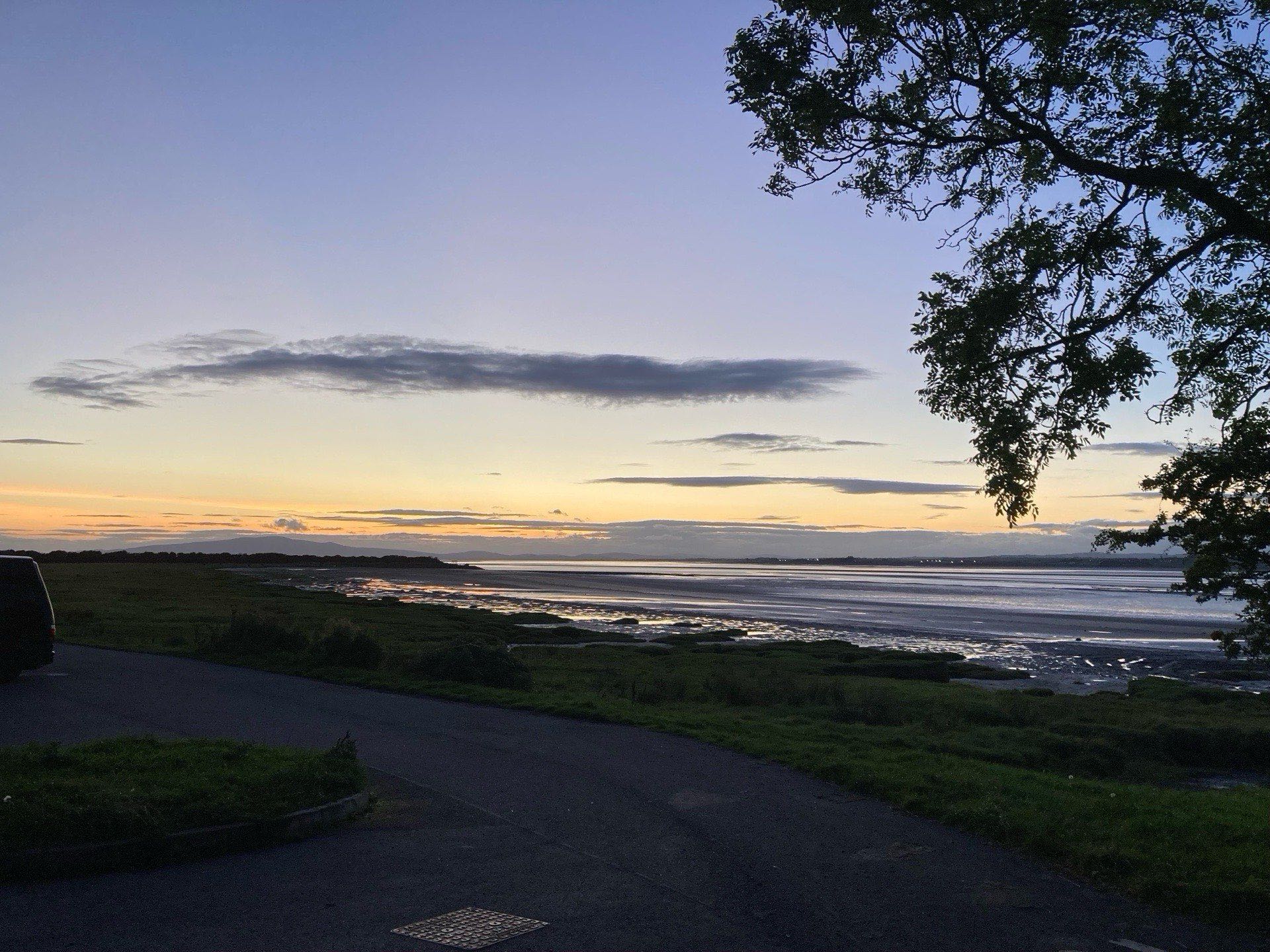
Shallow, and with Scotland on the other side to the north, the Solway was used as a ford for the English and Scots to invade each other for centuries, losing a few humans each crossing to “sinking sand”.
Bowness was, more or less, the western end of the wall Hadrian built across England, beginning probably AD122 to keep the Pics from invading Roman controlled England.
We’ve stayed at several B&Bs with the word “farm” in their name.The farm usually includes a rectangular 2-story stone house, attached to a set of multi-height stone buildings surrounding a brick or stone rectangular farmyard, often with a few chickens, cats, and a dog.
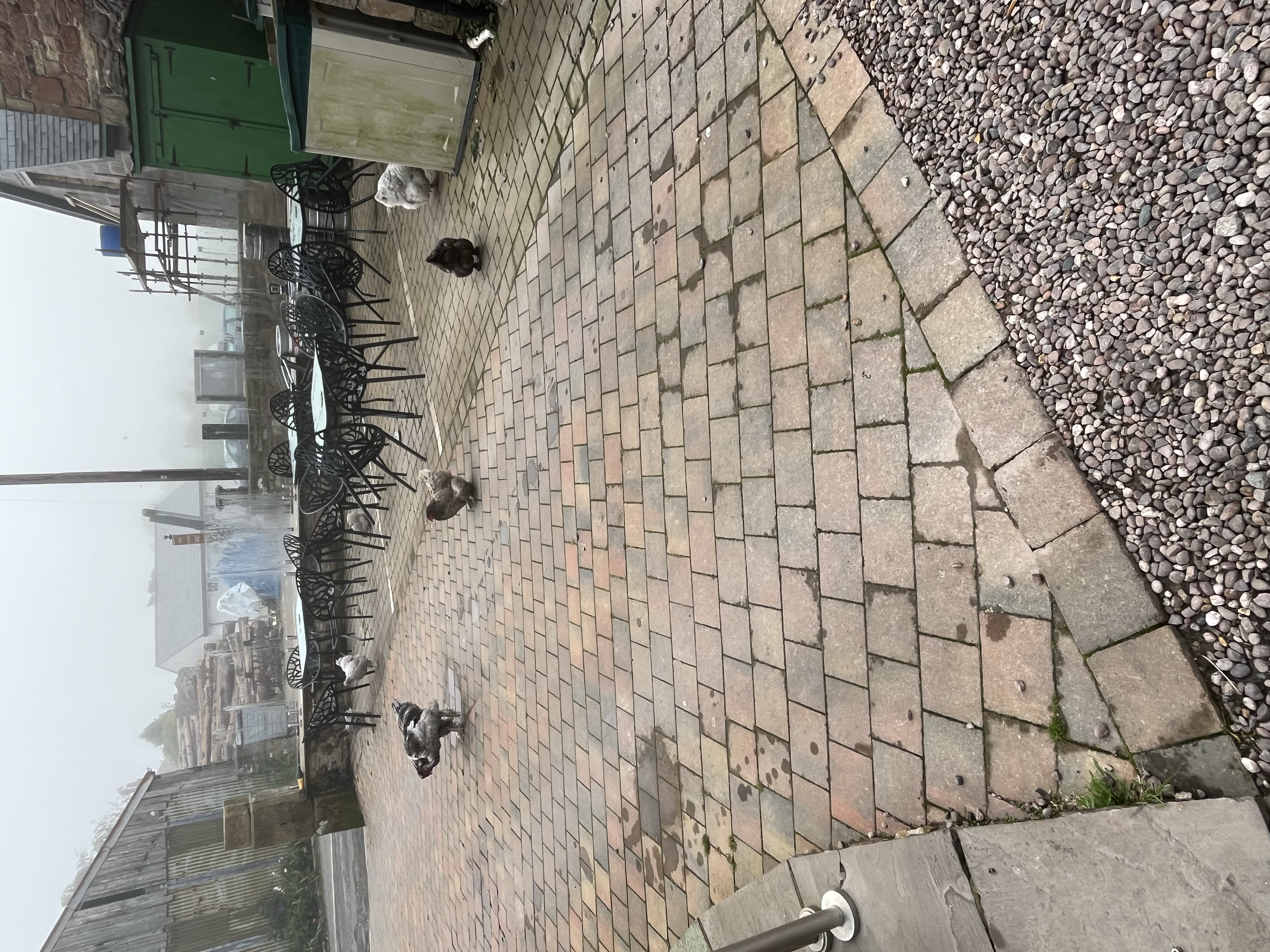
Occasionally some of the buildings house milk cows. The surrounding pastures usually have sheep, and sometimes Holsteins or beef cattle.
Most often the people who rent the land and own the livestock are not the people living in the large stone “farm” structures.
The stone from these “farms” and the churches and pubs and little homes along the way was taken from Hadrian’s Wall which is why it is no longer visible in most places.
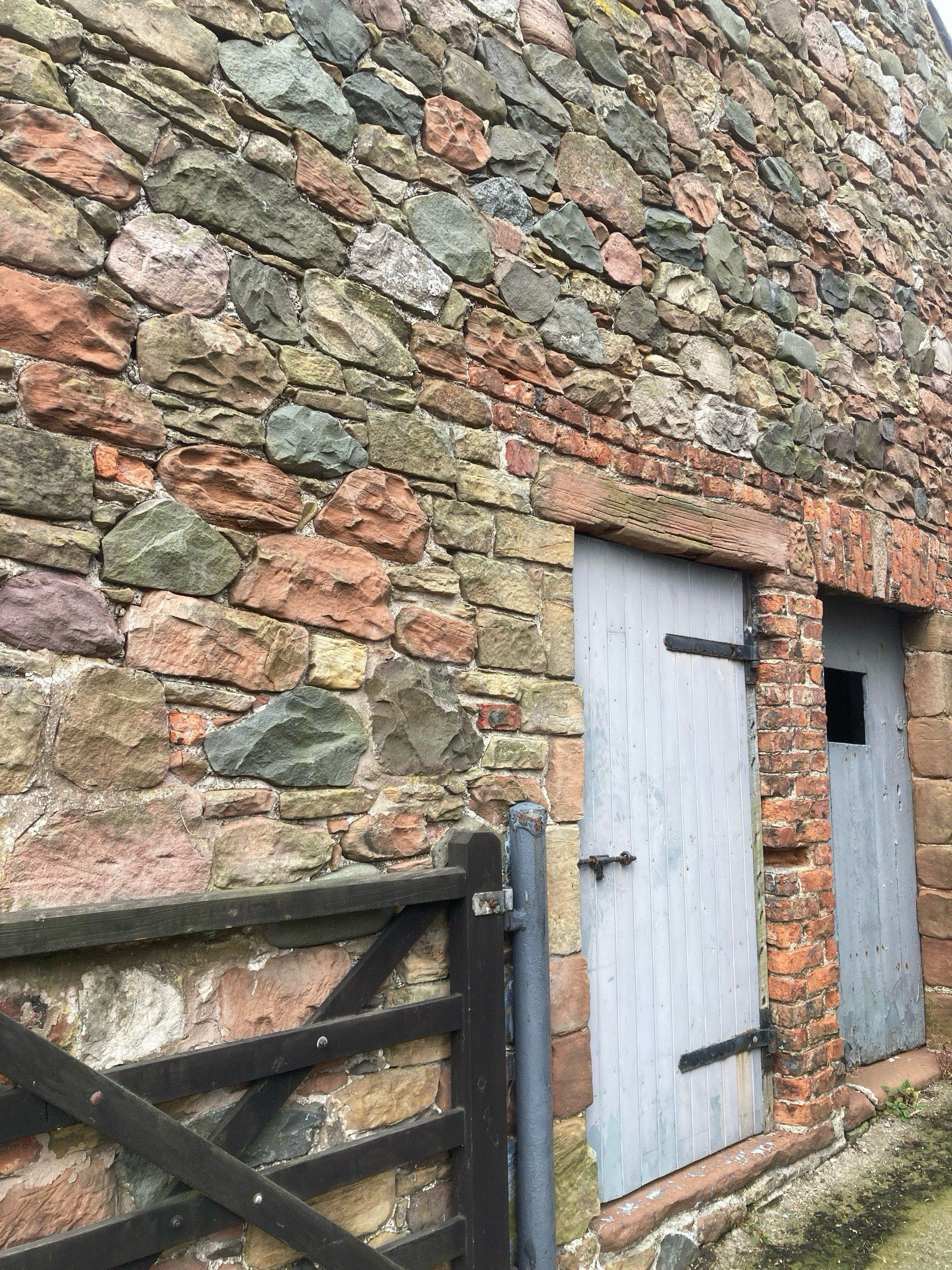
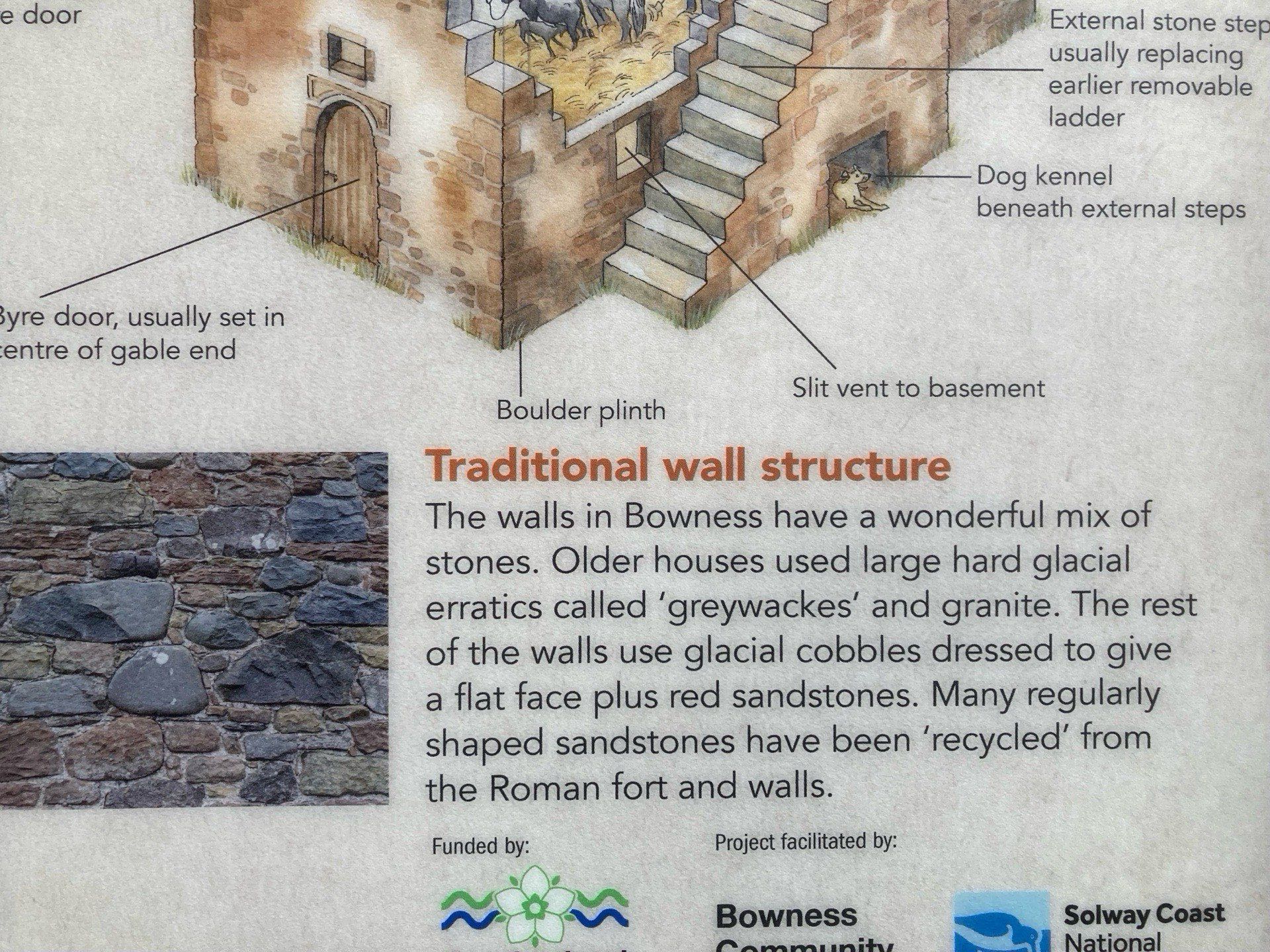
We began our walk in Bowness on Solway Monday morning.
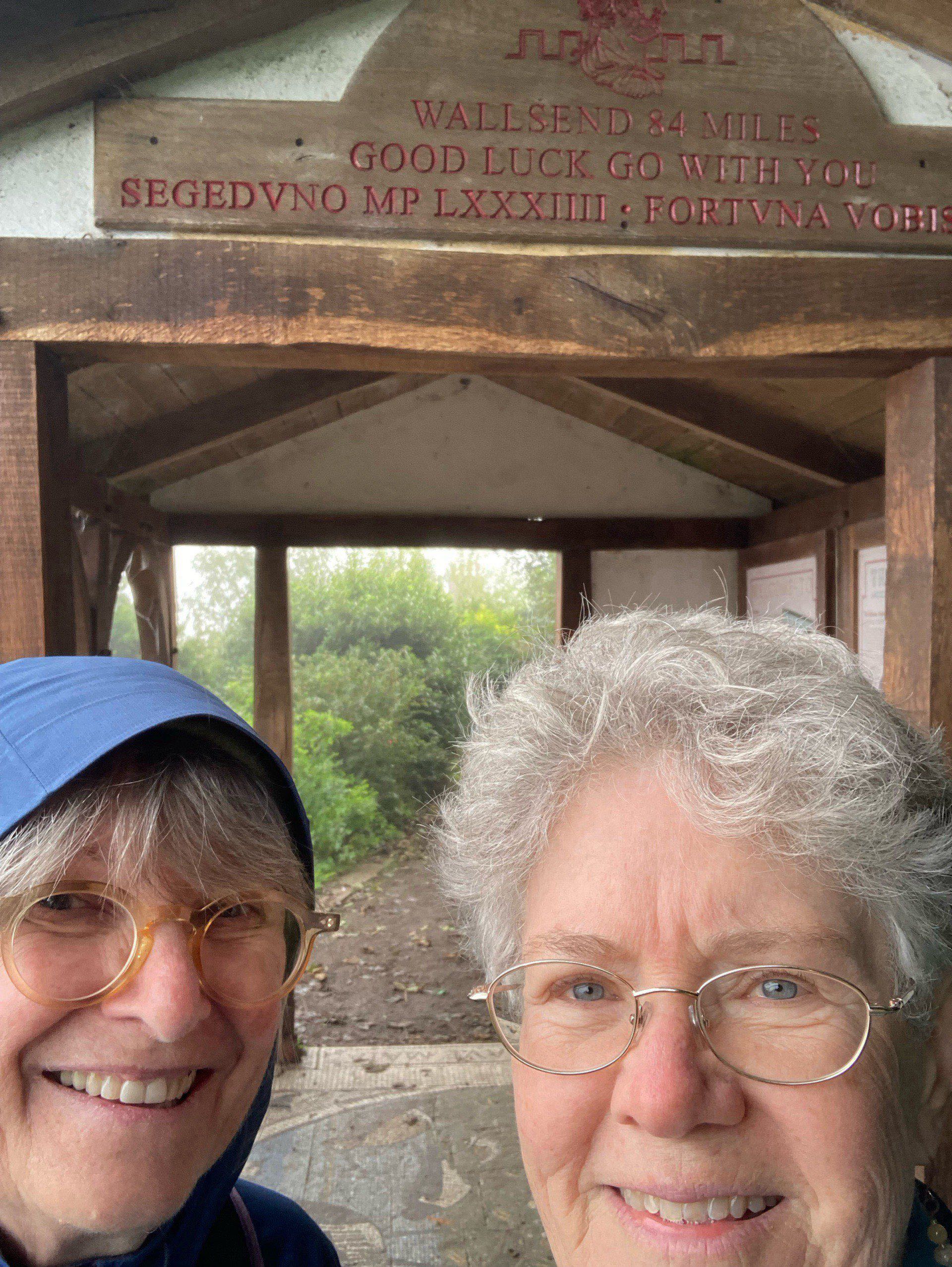
We walked 5.5 miles to Hillside Farms, where our hostess’s family had lived for three centuries, and have rented out the pastures. This is the view out our bedroom window.
We were tired and hungry upon arrival and Sandra gave us tea and scones and biscuits, and later some lovely veggie lentil soup. She was so caring, especially since there is no tea and supper in the word B&B.
The view out our bedroom window.
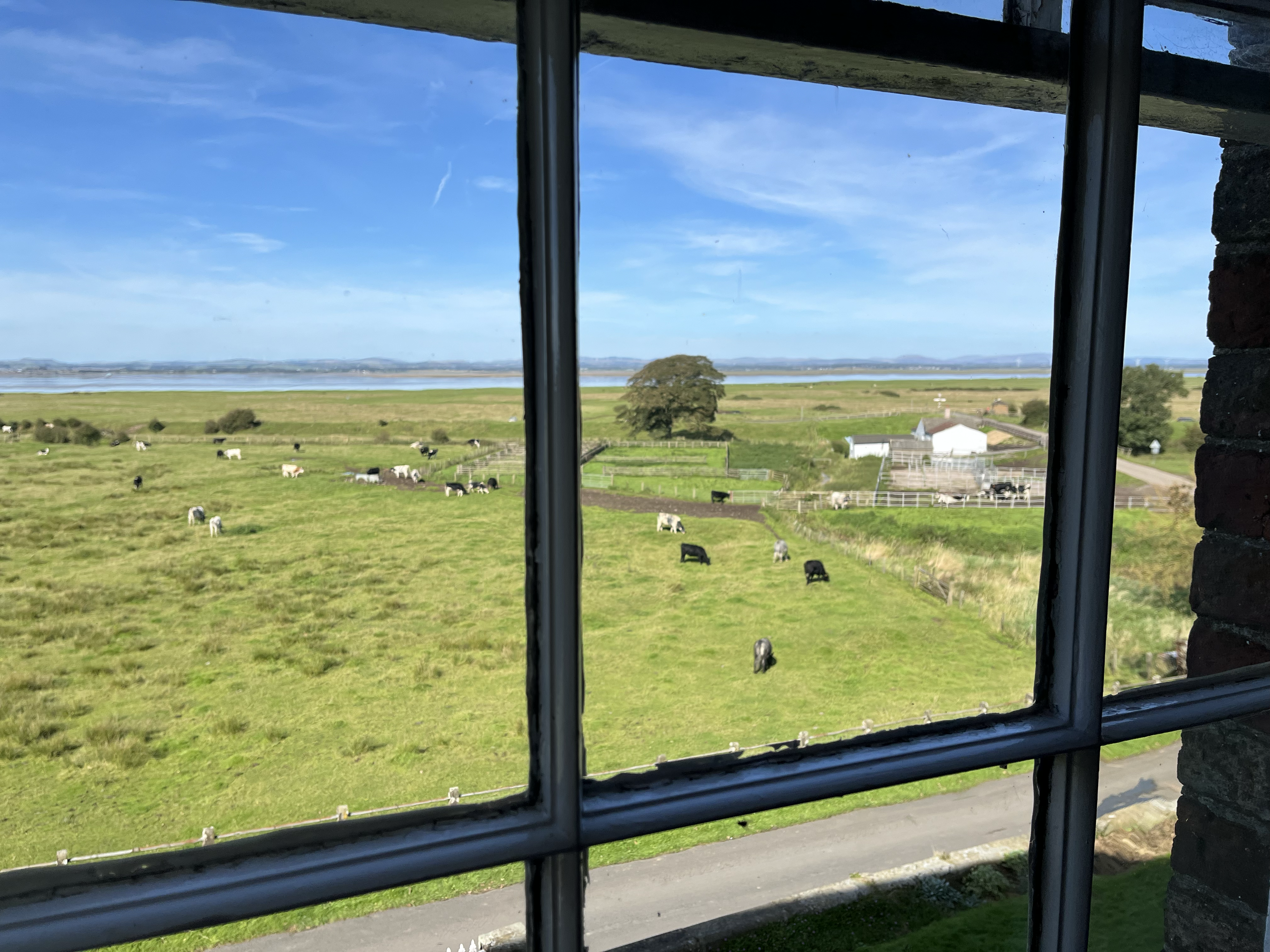
Tuesday we walked 9 miles to Carlisle, stopping at a small, stone (also from the wall), 12th century church, St. Michael’s, at Burgh by Sands. Built in the Roman style, it was dark and cold and damp.
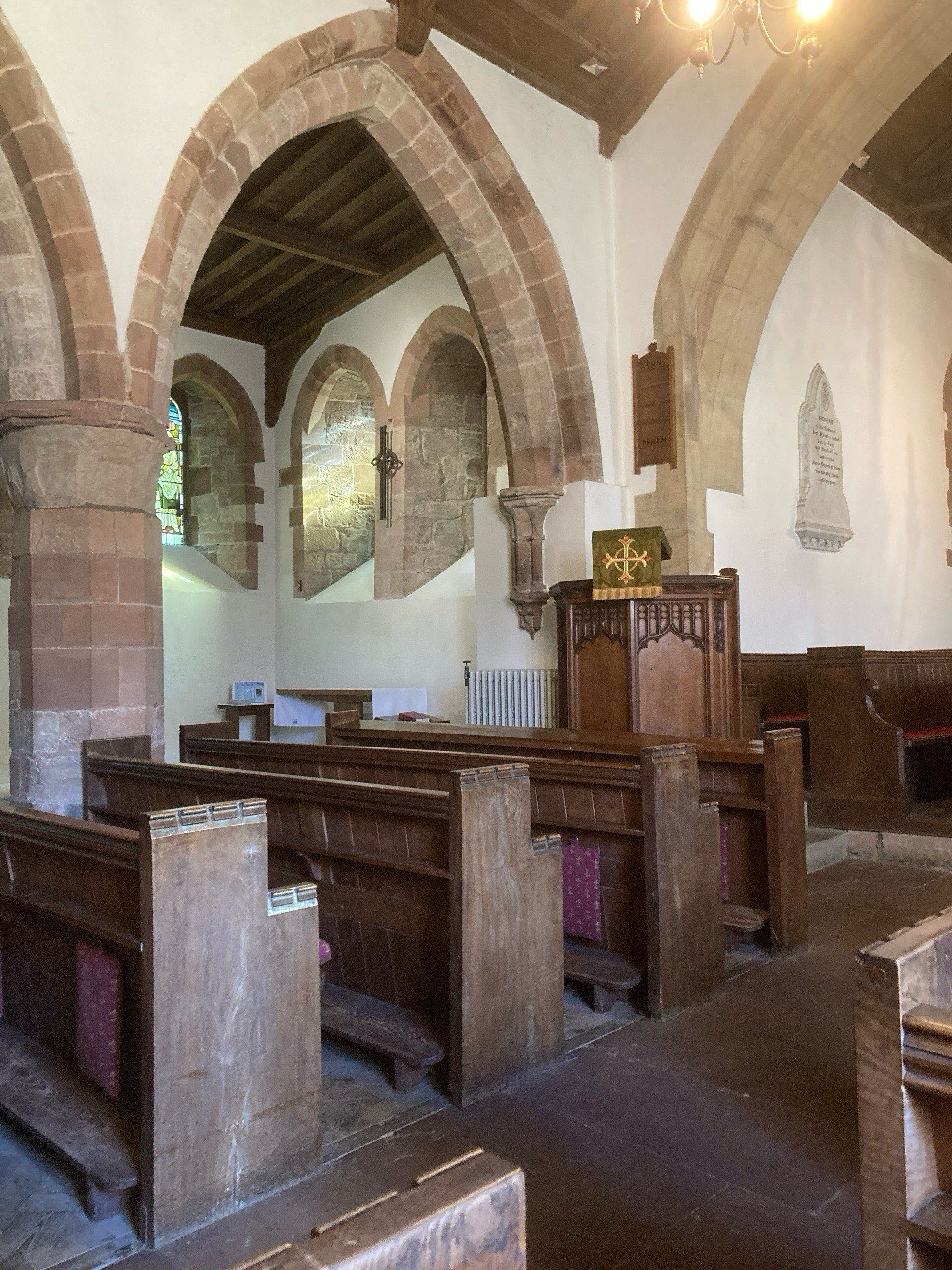
St. Michael’s was the site of what was an extraordinary event for the locals in 1306.
When Edward I, sometimes called Long-shanks because he was 6’4”, and also known as The Hammer of the Scots, brought an army of 400 from London to ford the Solway and defeat the Scots, he got disentary on the way, stayed over at Lanercost Priory where we stay later, and continued on to Burgh by Sands where he died. His body lay at St. Michael’s while his heir and advisors and whoever else, came up from London to collect the body. Locals from all around came to mourn the dead King in this tiny little country church, and observe the associated pageantry.



No comments:
Post a Comment